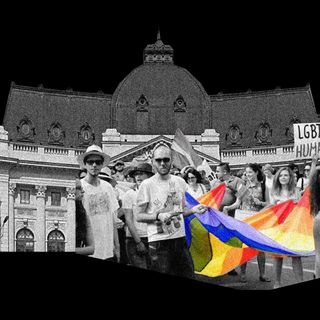1 in every 97 people around the world today has been displaced from their home, making up 1% of all humanity, according to a report from the UN Refugee Agency. Fueled by human rights violations, persecutions, and disruptions of public order, 79.5 million people have been both internationally and domestically displaced — highest-ever, and double the 2010 numbers — at a rate far greater than that at which countries are finding solutions.
“Forced displacement nowadays is not only vastly more widespread but is simply no longer a short-term and temporary phenomenon,” UN high commissioner for refugees, Filippo Grandi, said in a statement. “We need a fundamentally new and more accepting attitude towards all who flee, coupled with a much more determined drive to unlock conflicts that go on for years and that are at the root of such immense suffering.”
The hope that refugees will one day be able to go back to their homes after the resolution of the conflicts that drove them out has severely diminished in the last decade, the report finds. Only four million refugees were able to return home in the past decade; they didn’t necessarily return to stable conditions where they were able to re-settle, it adds.
The coronavirus pandemic, in addition, has led to countries closing their borders, keeping refugees out of their lands and at increased risk of poor health and starvation — a reality borne out of suspicion and fear that shows no signs of changing in the near future. With the stark, never-before-seen numbers delineated in the report, the need of the hour is to implement long-term, rehabilitative solutions for those displaced from their homes and seeking asylum in foreign lands, rather than keeping them in temporary relief camps.
Related on The Swaddle:
Lockdowns, Quarantines Put Refugee Women At Risk For Gender-Based Violence: UN Refugee Agency
Even if accepted, refugees often have to suffer a lack of physical and mental health infrastructure that makes their transition difficult, and social marginalization, often bordering on racist, anti-immigrant hate, that further compounds their isolation and alienation. The latter is also exacerbated with right-wing governments all around the world that are attempting to further a nationalist anti-immigrant, often anti-Muslim, sentiment that renders asylum environments hostile for refugees — for example, the NRC-CAA introduced in India that seeks to keep Muslim refugees out of India, and further disenfranchise the country’s Muslim population.
According to the UN Refugee Agency, “enabling refugees to become self-reliant pending the realization of an appropriate long-term solution is an important first step,” while constantly working toward resettlement and local integration. The UN Refugee Agency simultaneously recommends working to end conflicts in refugees’ home countries in the meantime, which again opens a pandora’s box of geopolitical issues, as seen in how developed countries such as the United States and Russia start proxy wars in conflict-ridden countries, attempting to instate puppet governments for their political and economic gain.
The numbers are jarring, and serve a preliminary purpose — but there’s a need for international institutions such as the UN to demonstrate they also understand the path to these long-term solutions and demonstrate they’re doing more than just calling for them. The report, for example, “doesn’t actually tell you much about the situation and the conditions of people, the protection problems they’re encountering, the growing resistance among countries to admit people, the growing tendency to push refugees back to their countries,” Jeff Crisp, a researcher at Oxford University’s Refugee Studies Centre, told The Guardian. “If you’re talking about increased numbers then you should also be talking about what are the responses to those increased numbers.”




